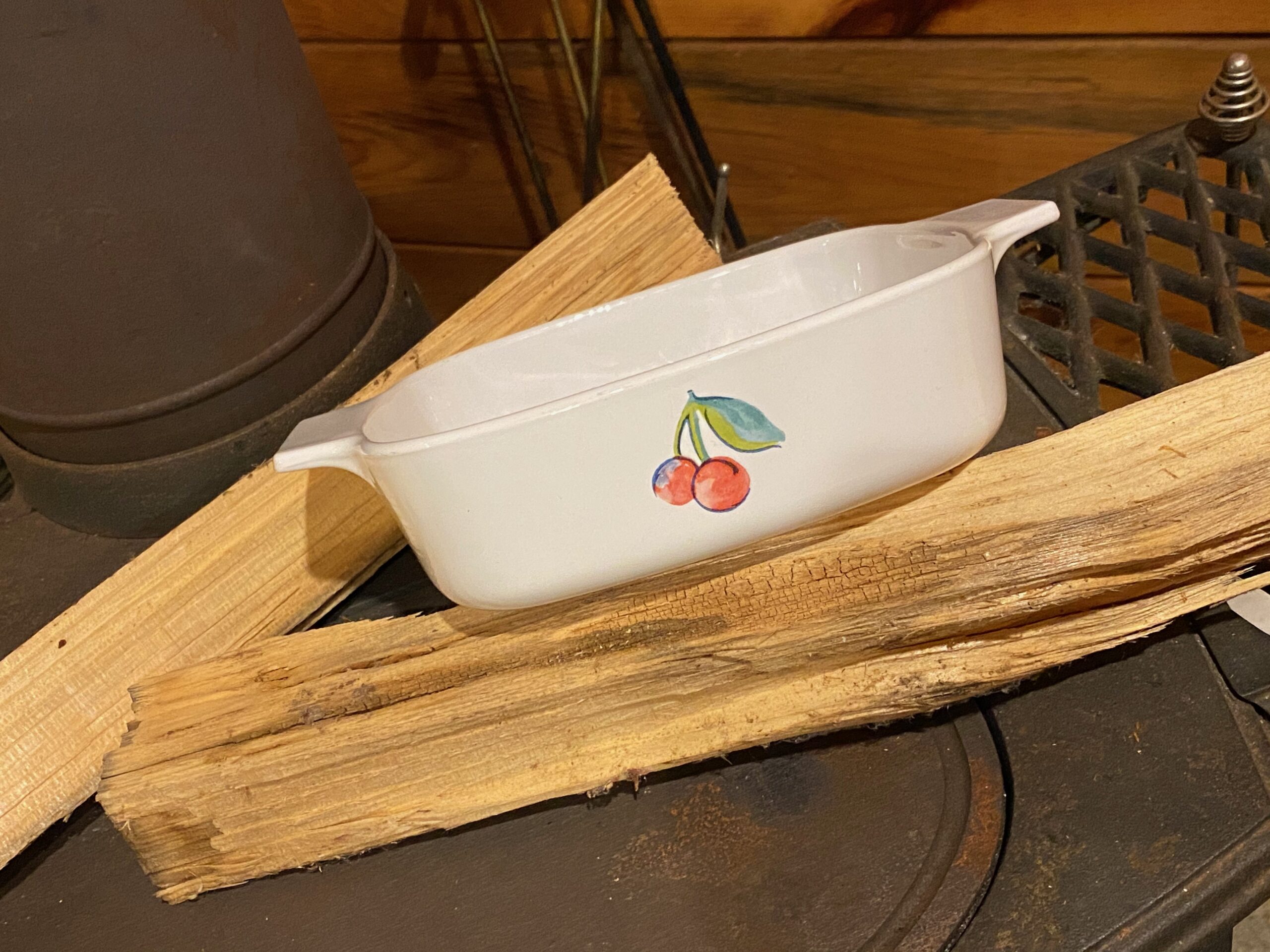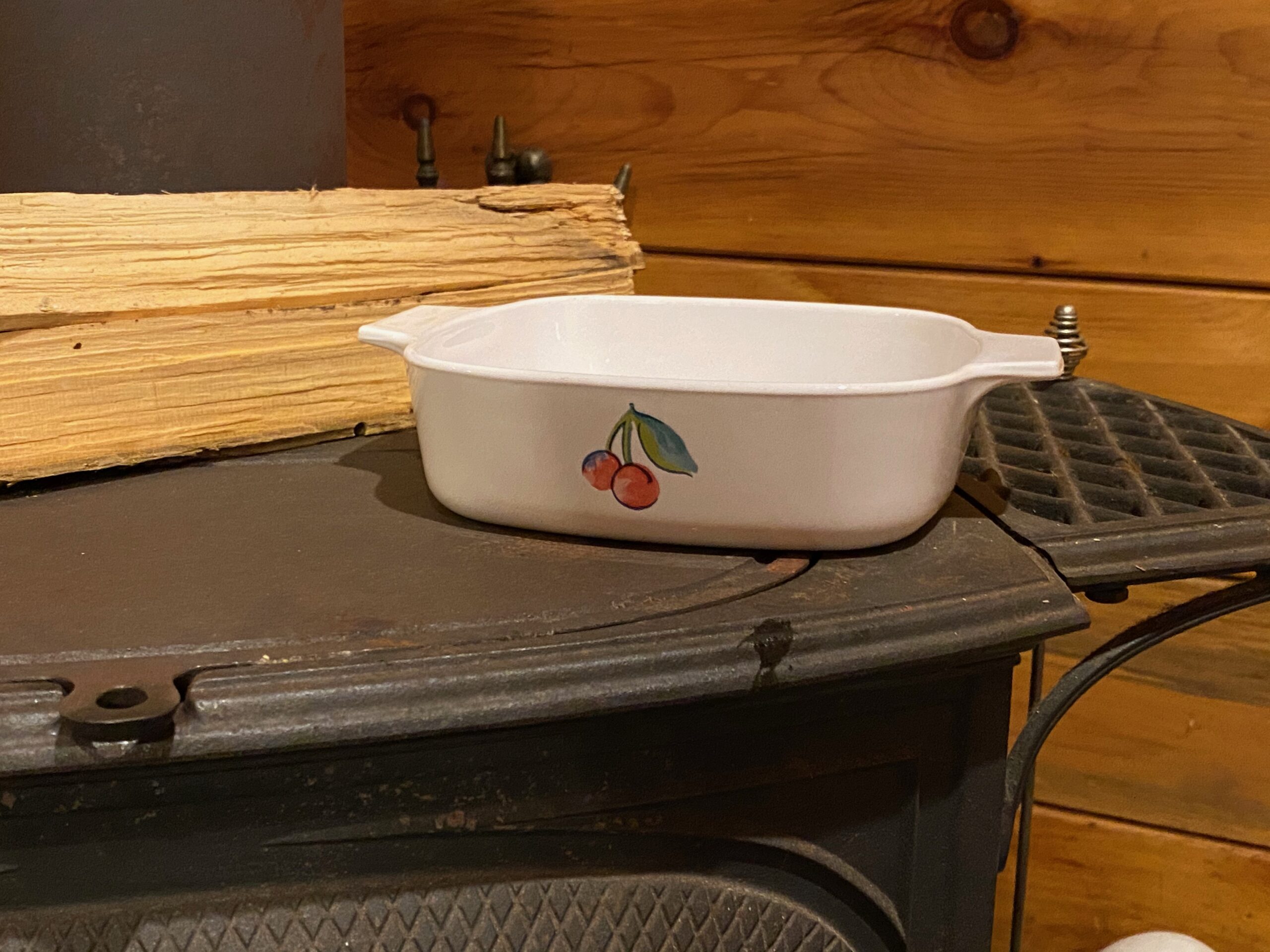Vintage Corning casserole with cherry design on the outside: 8,447 ppm Lead + 433 ppm Cadmium (90 ppm Lead is unsafe for kids)
For those new to this website:
Tamara Rubin is a multiple-federal-award-winning independent advocate for childhood Lead poisoning prevention and consumer goods safety, and a documentary filmmaker. She is also a mother of Lead-poisoned children (two of her sons were acutely Lead-poisoned in 2005). Since 2009, Tamara has been using XRF technology (a scientific method used by the U.S. Consumer Product Safety Commission) to test consumer goods for toxicants (specifically heavy metals — including Lead, Cadmium, Mercury, Antimony, and Arsenic). Tamara’s work was featured in Consumer Reports Magazine in February 2023 (March 2023 print edition).
Wednesday — January 20, 2021
When tested with an XRF instrument, the Corning casserole dish pictured here had the following readings:
On the exterior design (the red of the cherries)
- Lead (Pb): 8,447 +/- 284 ppm
- Cadmium (Cd): 433 +/- 26 ppm
- Barium (Ba): 3,948 +/- 192 ppm
- Chromium (Cr): 1,232 +/- 232 ppm
- Zirconium (Zr): 12,400 +/- 400 ppm
- Tin (Sn): 37 +/- 18 ppm
- Bromine (Br): 149 +/- 12 ppm
- Platinum (Pt): 585 +/- 122 ppm
- Zinc (Zn): 13,000 +/- 400 ppm
- Copper (Cu): 145 +/- 49 ppm
- Cobalt (Co): 1,329 +/- 150 ppm
- Iron (Fe): 476 +/- 162 ppm
- Vanadium (V): 923 +/- 273 ppm
- Titanium (Ti): 11,000 +/- 800 ppm
On the interior (food surface) of the dish:
- Barium (Ba): 3,868 +/- 182 ppm
- Antimony (Sb): 73 +/- 19 ppm
- Zirconium (Zr): 13,600 +/- 400 ppm
- Tin (Sn): 46 +/- 17 ppm
- Bromine (Br): 172 +/- 12 ppm
- Platinum (Pt): 390 +/- 105 ppm
- Zinc (Zn): 15,800 +/- 500 ppm
- Copper (Cu): 149 +/- 49 ppm
- Iron (Fe): 882 +/- 188 ppm
- Vanadium (V): 1,627 +/- 339 ppm
- Titanium (Ti): 18,900 +/- 1,200 ppm
The question I always get: Why is this a problem if the Lead is only on the outside? Here’s the answer!
As always, thank you for reading and sharing these results. I will likely update this piece soon with more information, however in the meantime, please check out the following links if you have questions:
- The testing methodology behind all the test results we report on LeadSafeMama.com.
- A video showing you how to search the website most efficiently, given there are over 2,700 articles and pages here.
- Here’s how to watch my documentary feature film on childhood Lead poisoning.
Please let me know if you have any questions. With 1.165 Million unique readers in 2020 alone, I am not always able to answer each and every question personally, but I do try.
Tamara Rubin
#LeadSafeMama
Amazon links are affiliate links. If you purchase something after clicking on one of our links, Lead Safe Mama, LLC may receive a small percentage of what you spend at no extra cost to you. 
Never Miss an Important Article Again!
Join our Email List











